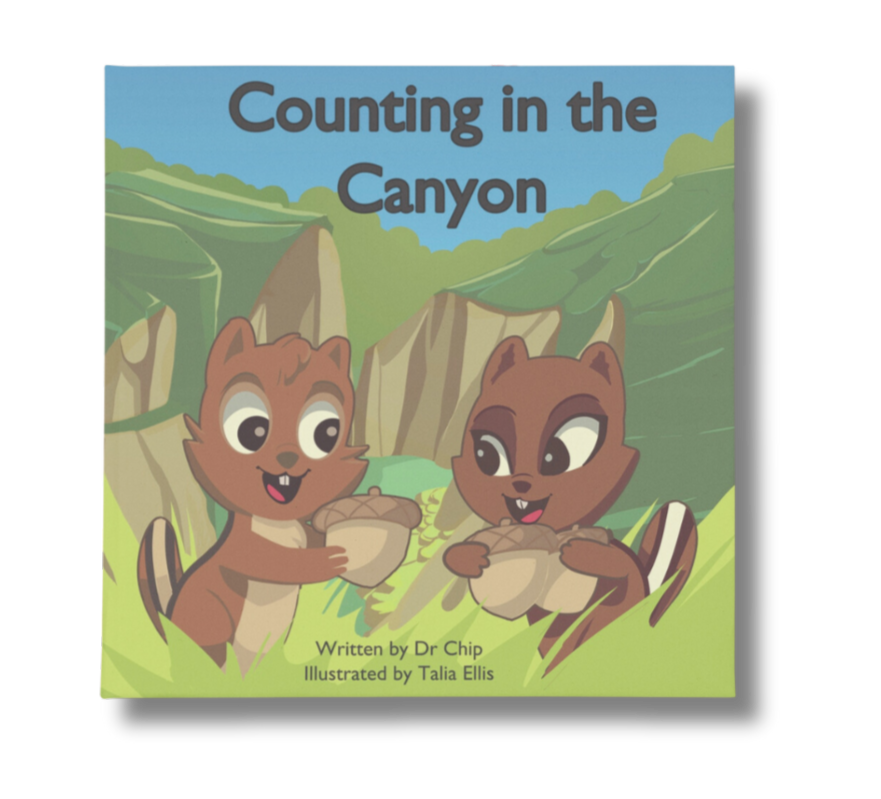Your basket is empty
Already have an account? Log in to check out faster.
Already have an account? Log in to check out faster.

Books offer so much more than entertainment for young children.
They provide windows into experiences children haven't yet had, mirrors reflecting their own feelings and challenges, and most importantly, natural conversation starters for discussing big concepts that might otherwise feel overwhelming or abstract.
Young children often struggle to articulate complex emotions or understand abstract concepts like change, bravery, or belonging. Books provide concrete examples and relatable characters that make these conversations more accessible. When discussing Timothy Acorn's journey to find a new home or counting discoveries in the canyon, children can process their own experiences through the safety of storytelling.
Stories create emotional distance that paradoxically allows children to get closer to difficult topics. A child who won't talk about their own fears might open up when discussing why Timothy Acorn felt nervous about his new environment. This indirect approach often yields more honest, meaningful conversations than direct questioning.
Change represents one of childhood's most challenging concepts. Whether moving to a new house, starting preschool, welcoming a sibling, or navigating family transitions, children need tools for processing life's inevitable shifts. "A New Home for Timothy Acorn" provides the perfect framework for these important conversations.
After reading about Timothy's destroyed home and his discovery of the Rolling Acorn Canyon, pause and ask open-ended questions like "How do you think Timothy felt when he first saw his home was gone?" or "What made Timothy brave enough to explore the new canyon?" These questions invite children to identify emotions and coping strategies without pressure to discuss their own situations directly.
Children often reveal their own feelings through their interpretations of characters. A child who's recently moved might focus on Timothy feeling scared or lonely, while a child excited about change might emphasize the adventure aspects. Listen carefully to what they choose to highlight—these choices provide insight into their internal experiences.
After discussing Timothy's experience, gently bridge to your child's life with "Have you ever felt like Timothy when something big changed?" This invitation allows children to share if they're ready, but doesn't force disclosure. Some children need multiple readings and conversations before they're comfortable making personal connections.
Nature-based books like "Counting in the Canyon" open conversations about the natural world, observation skills, and the joy of discovery—topics particularly relevant for Southern California families surrounded by diverse outdoor environments.
As you count together through the canyon, discuss what children notice in their own neighborhoods and local parks. Ask questions like "What animals have you seen at the beach?" or "What do you think lives in the trees at our park?" These questions help children connect book experiences to their real world.
Southern California offers incredible opportunities for extending these conversations beyond pages. Visit local treasures like Descanso Gardens in La Cañada Flintridge, the Living Coast Discovery Center in Chula Vista, or simply explore neighborhood parks. Bring "Counting in the Canyon" along and see what real-world discoveries mirror the book's illustrations.
Use the counting format as a springboard for observation games during everyday activities. Try "Let's count how many different types of plants we see on our walk" or "Can you spot five different birds during our beach visit?" This practice helps children develop the careful attention that enriches both reading experiences and outdoor adventures.
Create a nature collection inspired by your reading—perhaps gathering interesting rocks, leaves, or photos of local wildlife. Store these treasures in a special box or basket near your reading corner, creating physical connections between stories and experiences.
Both "A New Home for Timothy Acorn" and "Counting in the Canyon" address aspects of growing and changing—perfect conversation starters for discussing childhood development milestones that might feel confusing or scary to young children.
The moment in "A New Home for Timothy Acorn" when Timothy discovers his loose tooth provides wonderful opportunities for discussing physical changes and growing up. For children approaching this milestone themselves, Timothy's experience normalizes what might otherwise feel frightening.
Use this story moment to discuss the tooth fairy tradition and what it means in your family. If you haven't yet established tooth fairy customs, this conversation provides the perfect introduction. Consider getting a special tooth fairy pillow that makes the tradition more concrete and exciting—having a designated place for teeth and treasures helps children feel more prepared and less anxious about this developmental milestone.
Discuss how growing up involves lots of small changes, not just big dramatic moments. Timothy's tooth becoming loose while he's adjusting to his new home shows that multiple changes often happen simultaneously. This normalization helps children understand that feeling overwhelmed by several transitions at once is perfectly normal.
Stories of characters facing challenges and persevering teach children about courage and resilience more effectively than direct instruction ever could. After reading about Timothy's adventures, discuss different types of bravery by asking "Timothy was brave when he explored the new canyon even though he didn't know what he'd find. What kinds of things feel brave to you?"
Help children understand that bravery doesn't always mean dramatic heroism—sometimes it's trying new foods, speaking up in class, or making new friends. Share examples of your own "brave moments," including times you felt scared but did something anyway. This vulnerability helps children understand that everyone experiences fear and that courage means acting despite those feelings.
Research shows how nature builds resilience in kids, making nature-themed books particularly valuable for these conversations. Characters navigating outdoor challenges provide concrete examples of problem-solving, persistence, and adaptation.
Choose calm, unhurried times for reading and discussing books. Bedtime often works well since children are naturally more reflective during bedtime routines. However, some children open up better during daytime reading or even while looking through books together in the car.
Ask open-ended questions that encourage thinking rather than yes/no responses. Use prompts like "What do you think Timothy was feeling when..." or "I wonder why the character decided to..." These open invitations encourage children to think deeply and share their interpretations.
Follow your child's lead in conversations. If they want to linger on one particular page or idea, allow that exploration even if it means not finishing the book. The conversation matters more than completing the story in one sitting.
Listen more than you talk. Resist the urge to provide immediate answers or interpretations. Allow silences where children can think and process. Some of the most meaningful insights emerge after pauses that adults often feel compelled to fill.
Revisit books frequently. Children benefit from hearing favorite stories repeatedly, and each reading can spark different conversations as children's understanding deepens. A three-year-old might focus on counting elements in "Counting in the Canyon," while the same child at five might notice details about animal habitats or ecosystems.
After reading about Timothy's canyon adventures, plan family hikes on Southern California trails where children can look for their own animal homes. The Eaton Canyon Nature Center in Pasadena or Torrey Pines State Natural Reserve in San Diego offer excellent opportunities for extending book-based learning into real-world exploration.
Document your adventures with photos or drawings, creating your own family nature book inspired by your reading. This activity reinforces both the book's themes and your family's unique experiences.
Use several books to explore similar themes from different angles. Pair "A New Home for Timothy Acorn" with other stories about change, belonging, or new beginnings. This multi-book approach helps children develop more nuanced understanding of complex concepts.
For more information on using books as conversation tools with children:
Books become conversation tools when we approach them with intentionality and openness. These conversations, woven naturally into reading time, help children process experiences, develop emotional intelligence, and strengthen family connections that support them through all of childhood's adventures.

